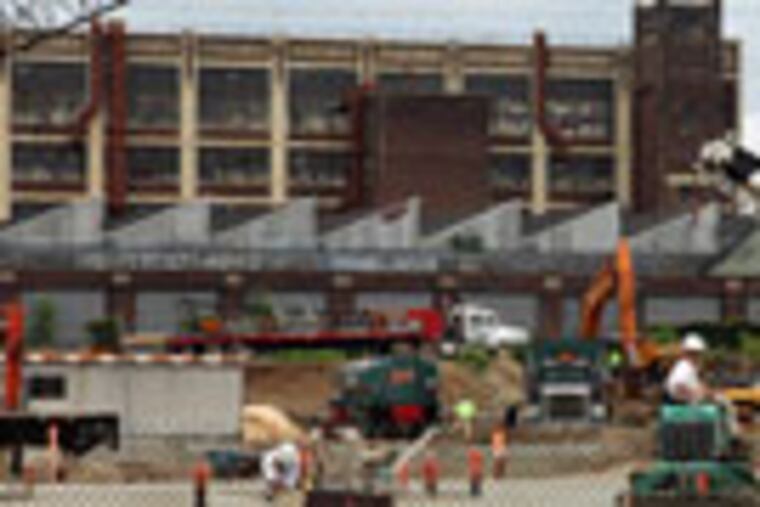Kroc project in Phila. is back on track
The Salvation Army may be having trouble completing the funding for its ambitious Kroc community centers elsewhere, but here in Philadelphia, things are moving along just fine.

The Salvation Army may be having trouble completing the funding for its ambitious Kroc community centers elsewhere, but here in Philadelphia, things are moving along just fine.
After a seven-month lull, fund-raising is picking up, construction is under way, and an October 2010 grand opening is set for the $129.5 million project being built in Nicetown.
Funded largely by a bequest from McDonald's heiress Joan Kroc, the Philadelphia center has had its own struggle with fund-raising - but the donations this spring have enabled work to proceed, according to Salvation Army officials.
The Salvation Army Ray & Joan Kroc Corps Community Center will be larger and more expansive than originally planned. That is in part because of additional Kroc money provided by the national Salvation Army as a result of the local fund-raising effort, according to Chaz Watson, director of development for the Salvation Army's Eastern Pennsylvania & Delaware Division.
That is all the more remarkable given how difficult the economy has been on plans for Kroc centers elsewhere. Plans for a center in Detroit, for instance, have been shelved. A center planned for Chicago has been reduced in size and is a year behind schedule. (An $85 million Kroc center is planned for Camden. A capital fund-raising campaign has just begun.)
In all, the Salvation Army has planned about 28 community centers around the nation using a $1.6 billion gift left by Kroc, widow of McDonald's founder Ray Kroc. The money can be spent only on the centers. Local communities are required to raise funds for endowments to handle operating costs.
All of the projects are patterned on a center Joan Kroc built in San Diego, which includes three pools, an ice-skating rink, a 600-seat theater, and a school for the performing arts.
Philadelphia's center is being built in one of the city's poorest neighborhoods, on the site of the old Budd Plant on Wissahickon Avenue near Hunting Park Avenue. It will have an indoor water park and two other swimming pools, a gym, a fitness center, music and dance studios, and a computer center, among other things.
Watson said it was expected to be used by 750 to 1,000 people a day.
The center was to be 110,000 square feet, but it has grown to 130,000 square feet with additions, including a third pool. The original $72 million Kroc grant was raised to $93.5 million, Watson said, which includes $44.5 million toward the operations endowment.
"It was a reward for the progress we have made," Watson said of the additional funds.
With the Kroc money and local donations, the Salvation Army has $123.1 million of the $129.5 million total price tag, Watson said. He expected the full figure to be reached by December.
He was not always so optimistic.
In November, as the economy tanked, fund-raising virtually ground to a halt, he said. From November through April, less than $1 million was raised, Watson said. In the last month alone, however, there have been $2.5 million in donations. The rest of the money was raised previously from donations and public funding.
Watson gave much of the credit for the campaign to Raymond H. Welsh, UBS Financial Services' senior vice president for investments, who has led the fund-raising effort.
"It has been a very challenging time," Welsh said. "But we continued to stay in front of people, to arrange meetings, mostly one-on-one, with potential donors, corporate, individuals, and foundations."
He said people, even when financially stretched, want to help once he has described the potential impact of the center.
"I'll frequently say to people, 'Let the eyes of your heart imagine the thousands of people, particularly youngsters, whom you are going to benefit,' " he said. "People start to get passionate about it."